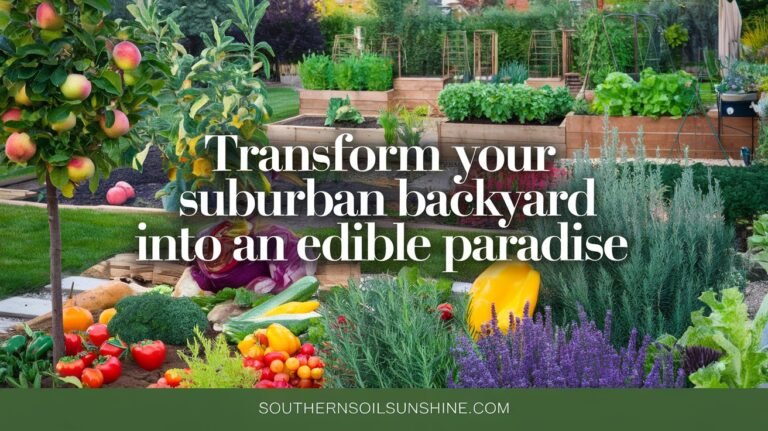15 Magical Pairings for Edible Landscaping You’ll Love

Some of the links on this website are affiliate links, which means that if you make a purchase through these links, I may earn a small commission at no additional cost to you. As an Amazon Associate, I earn from qualifying purchases. I only recommend products I genuinely trust and believe will bring value to my readers. For more information, please visit the Privacy Policy page. Thank you for supporting my blog and helping me continue to provide valuable content.
Edible landscaping is all about combining beauty and functionality in your garden. Here are 15 magical pairings of plants that not only look great together but also complement each other’s growth and flavor. Get ready to elevate your outdoor space with these creative combinations that make your landscape both delicious and delightful!
1. Kale and Pansies

Kale and pansies make a fun pair in any garden. The vibrant colors of the pansies pop against the rich greens and purples of the kale. This combination not only looks great but also adds a burst of life to your outdoor space.
Why it works: Kale’s textured, dark green leaves pair beautifully with the cheerful, multi-colored blooms of pansies. Both thrive in cooler weather, making them perfect for fall and winter beds.
Placement: Alternate rows of kale and pansies for a checkerboard effect.
2. Thyme and Creeping Sedum
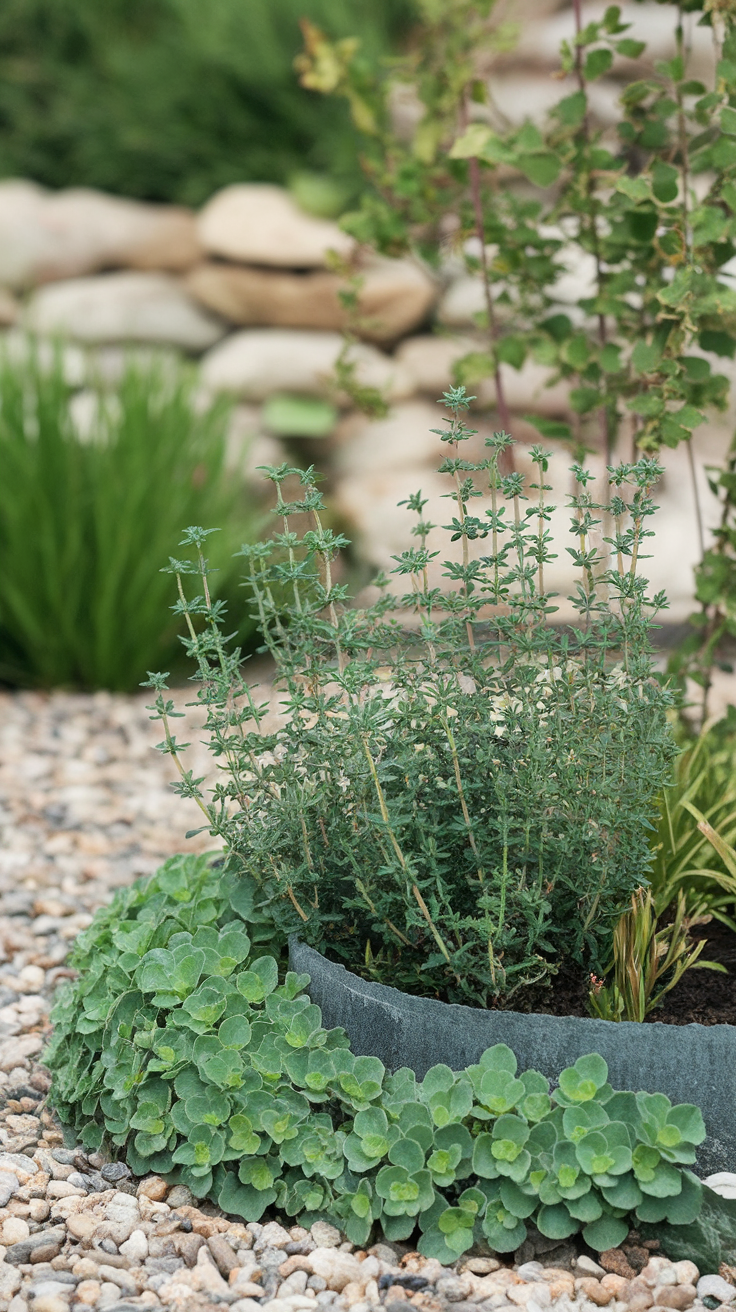
Thyme and creeping sedum make a great pair in any garden. Their vibrant colors and textures create a lively scene. Plus, both are low-maintenance, making them perfect for busy gardeners.
Why it works: Thyme provides aromatic greenery and small purple flowers, while creeping sedum adds contrasting texture and serves as a drought-tolerant ground cover. Both are hardy and thrive in dry conditions.
Placement: Use thyme to border beds, with sedum filling in gaps.
3. Dill and Zinnias
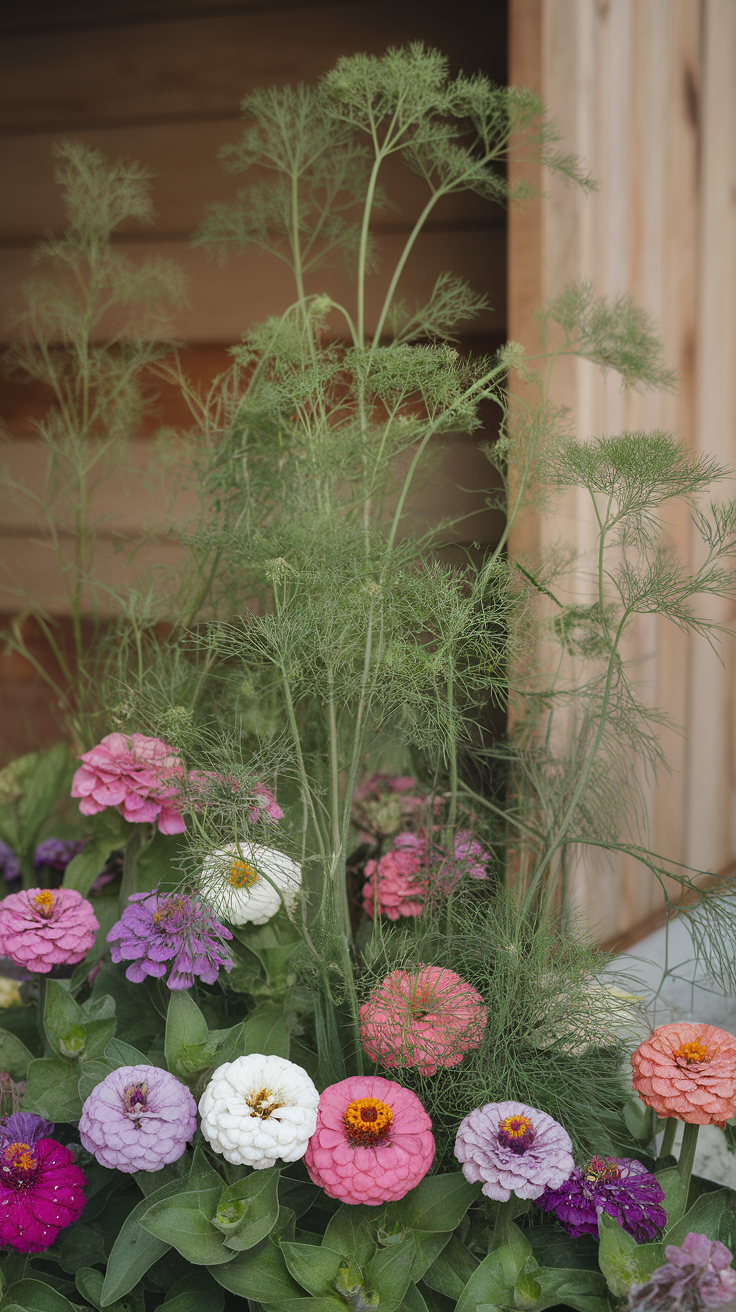
Dill and zinnias make a perfect pair in any garden. The tall, feathery dill adds height and a lovely green contrast to the colorful zinnias. Together, they create a cheerful and inviting space that’s hard to resist.
Why it works: Dill’s airy fronds contrast beautifully with zinnia’s bold, structured blooms. Dill attracts beneficial insects, while zinnias draw pollinators, creating a harmonious, functional bed.
Placement: Plant dill toward the back of the bed for height, with zinnias in the middle or front.
4. Cherry Tomatoes and Nasturtiums

Cherry tomatoes and nasturtiums make a delightful gardening duo. The vibrant colors of the flowers complement the juicy tomatoes perfectly. Plus, nasturtiums are edible, adding a peppery twist to your salads!
Why it works: Cherry tomatoes climb upward, creating vertical interest, while nasturtiums sprawl outward, adding vibrant orange or yellow blooms. Nasturtiums also deter pests and are edible.
Placement: Use a small trellis for tomatoes, with nasturtiums planted at the base.
5. Basil and Marigolds
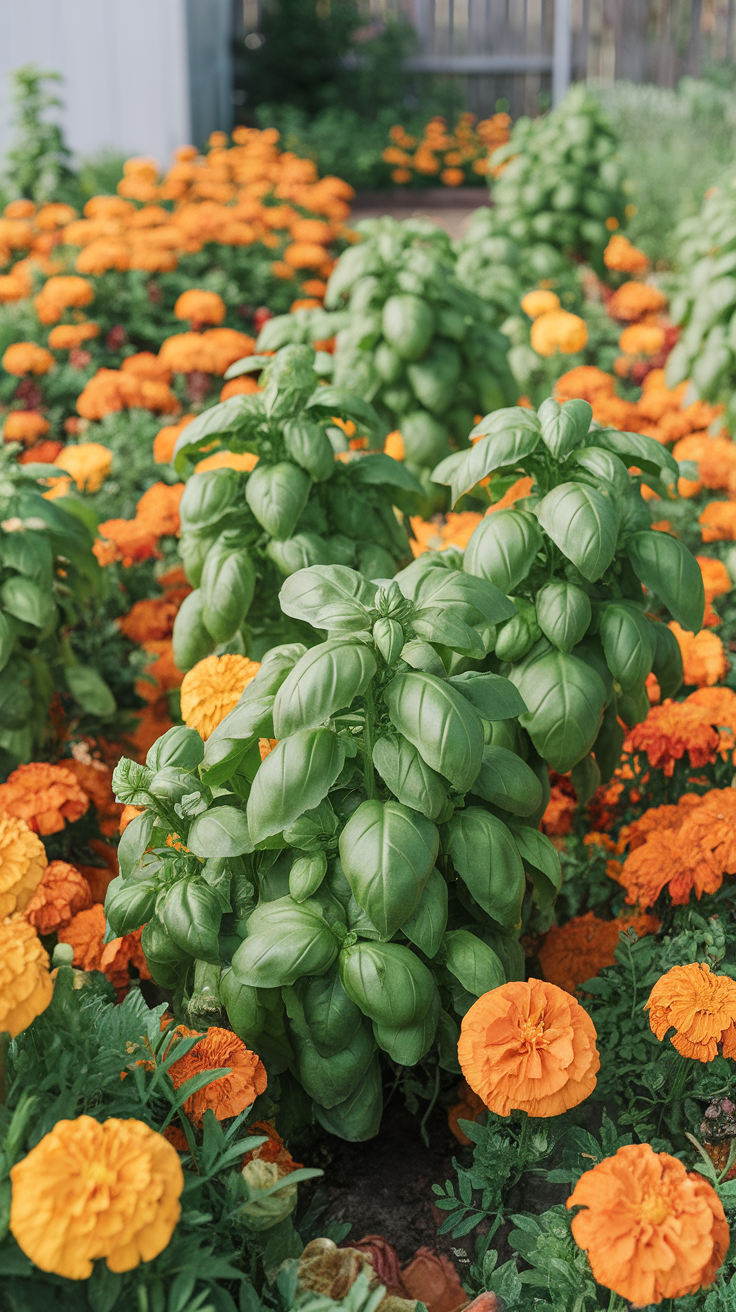
Basil and marigolds make a great pair in the garden. Their colors brighten up any space, with the lush green basil contrasting beautifully against the vibrant orange marigolds. Plus, they can even benefit each other, as marigolds help keep pests away from the basil!
Why it works: Basil repels pests like aphids, while marigolds deter nematodes and attract pollinators. Both thrive in sunny locations and complement each other with their vibrant green and orange hues.
Placement: Plant basil around the base of marigolds in a sunny border or bed.
6. Swiss Chard and Petunias

Swiss chard and petunias make a great pairing in the garden. Their colors complement each other beautifully, with the vibrant greens and reds of the chard contrasting with the soft pastels of the petunias. This combo not only looks good but also brings life to any outdoor space!
Why it works: Swiss chard adds height and bold color with its rainbow stalks, while petunias spread out to fill gaps with cascading flowers. Both love sun and are low-maintenance.
Placement: Use Swiss chard as a central feature with petunias trailing along the edges.
7. Carrots and Alyssum
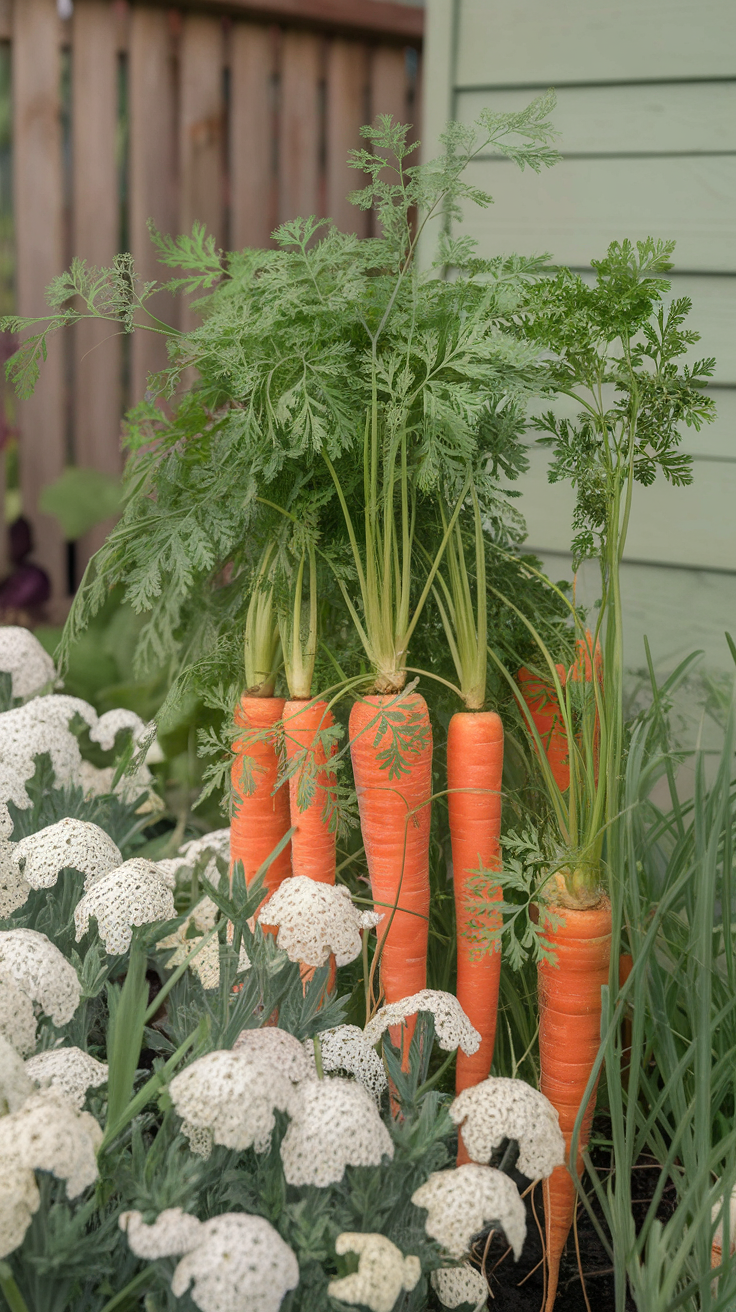
Carrots and alyssum make a great pairing in the garden. The vibrant colors of the flowers complement the earthy tones of the carrots. Together, they create a cheerful scene that invites anyone to enjoy gardening.
Why it works: Carrots provide lush, fern-like foliage, while alyssum offers a blanket of small, fragrant flowers. Alyssum attracts pollinators and beneficial insects to protect the carrots.
Placement: Plant carrots in rows with alyssum lining the edges of the bed.
8. Rosemary and Lavender
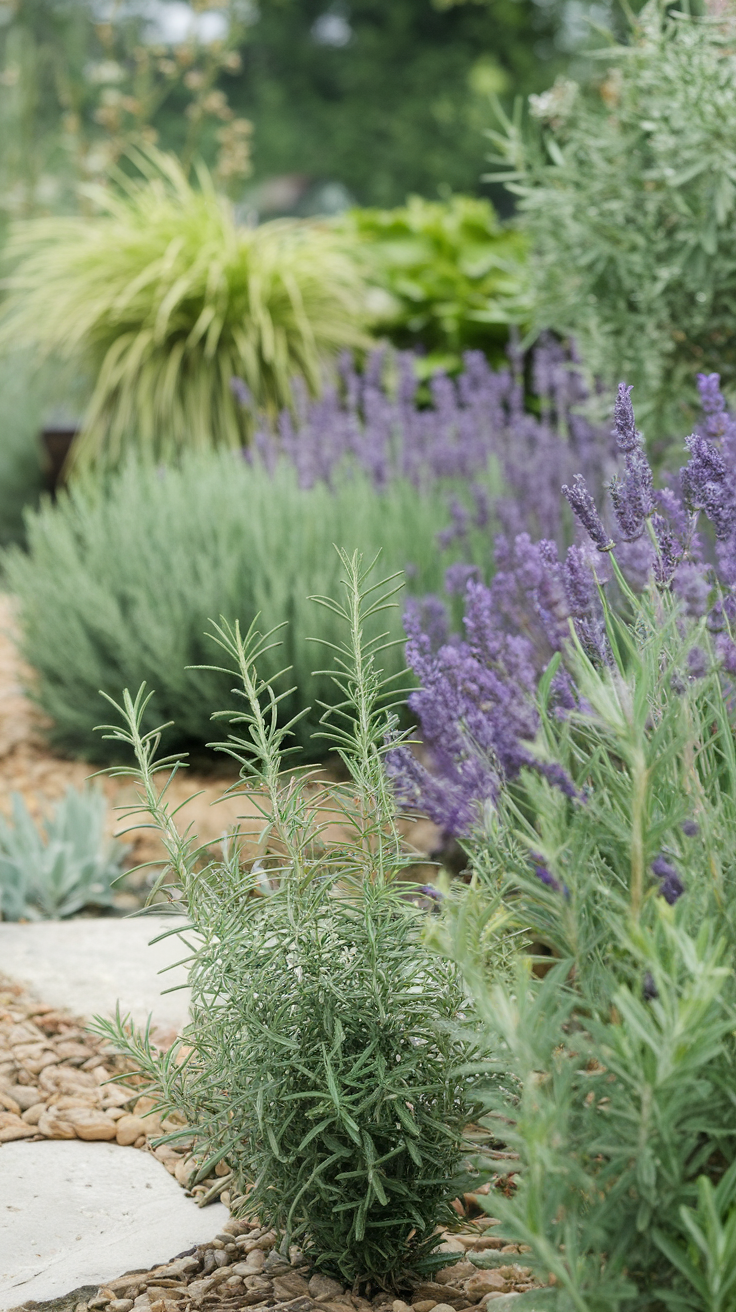
Rosemary and lavender bring a lovely touch to any garden. Their scents can uplift your mood while adding beauty to the space. Plus, they’re great for cooking and can be used in various dishes!
Why it works: Both are Mediterranean herbs that thrive in similar conditions, offering aromatic foliage and stunning purple blooms. They’re drought-tolerant and excellent for edging beds.
Placement: Use rosemary for height in the back and lavender as a mid-height border.
9. Peppers and Sunflowers

Bright and colorful, peppers and sunflowers make a fantastic pair in any garden. The bold hues of the peppers contrast beautifully with the sunny yellows of the sunflowers. Together, they create a lively and cheerful atmosphere that is hard to resist.
Why it works: Peppers add bold pops of green and red, while sunflowers provide height and shade, creating a multi-layered visual effect. Sunflowers also attract pollinators to the bed.
Placement: Plant peppers in front of sunflowers for a tiered design.
10. Lettuce and Violas

Lettuce and violas make a charming pair in any garden. The vibrant colors of the flowers complement the fresh greens beautifully. Together, they create a delightful scene that’s easy to enjoy.
Why it works: Lettuce offers lush, leafy greens, while violas provide pops of color with edible flowers. Both thrive in cool weather and partial shade, making them ideal for spring and fall.
Placement: Interplant lettuce and violas for a whimsical, cottage-garden vibe.
11. Strawberries and Mint
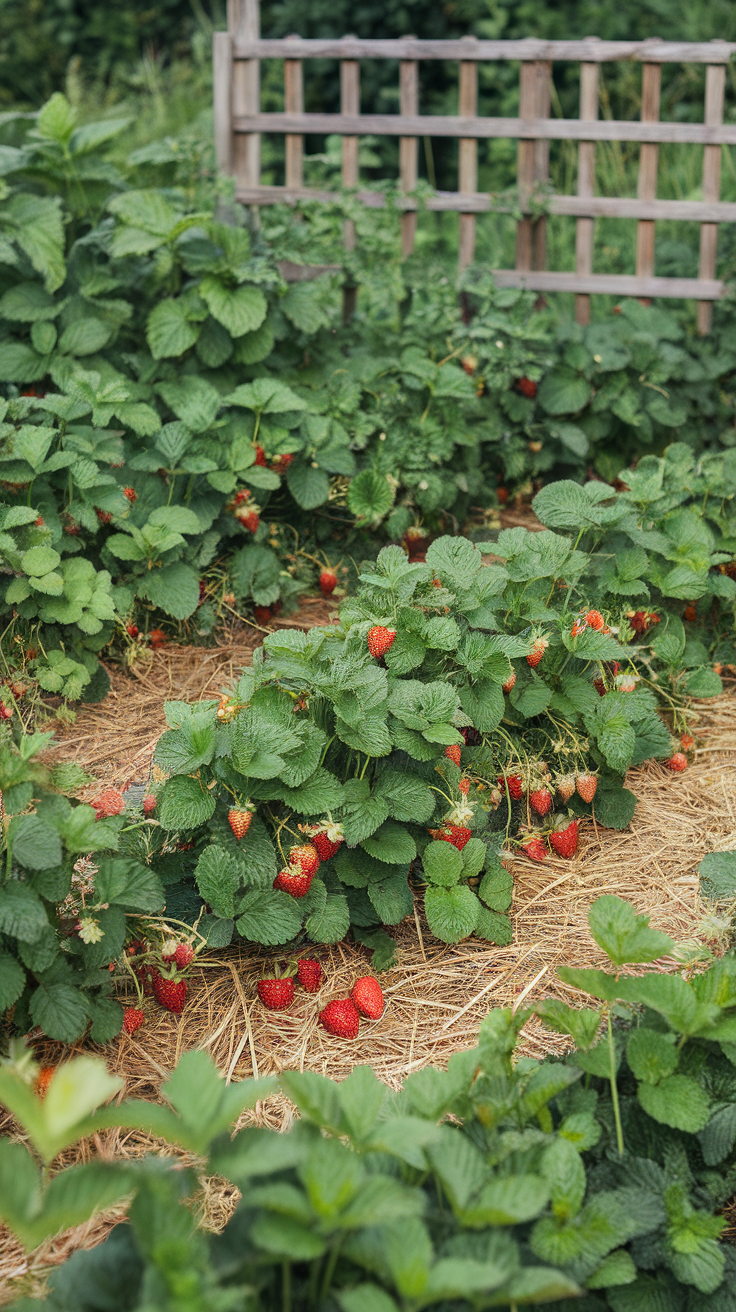
Strawberries are a summer favorite that pairs perfectly with fresh mint. The sweet and juicy berries, combined with mint’s coolness, create a delightful flavor explosion. Whether in a salad or as a refreshing drink, this combo is sure to brighten your day!
Why it works: Strawberries form a low-growing ground cover, while mint adds vertical greenery and fragrance. Both are hardy and thrive in sunny or partially shaded beds.
Placement: Plant strawberries at the front of the bed with mint scattered throughout.
12. Chives and Black-Eyed Susans
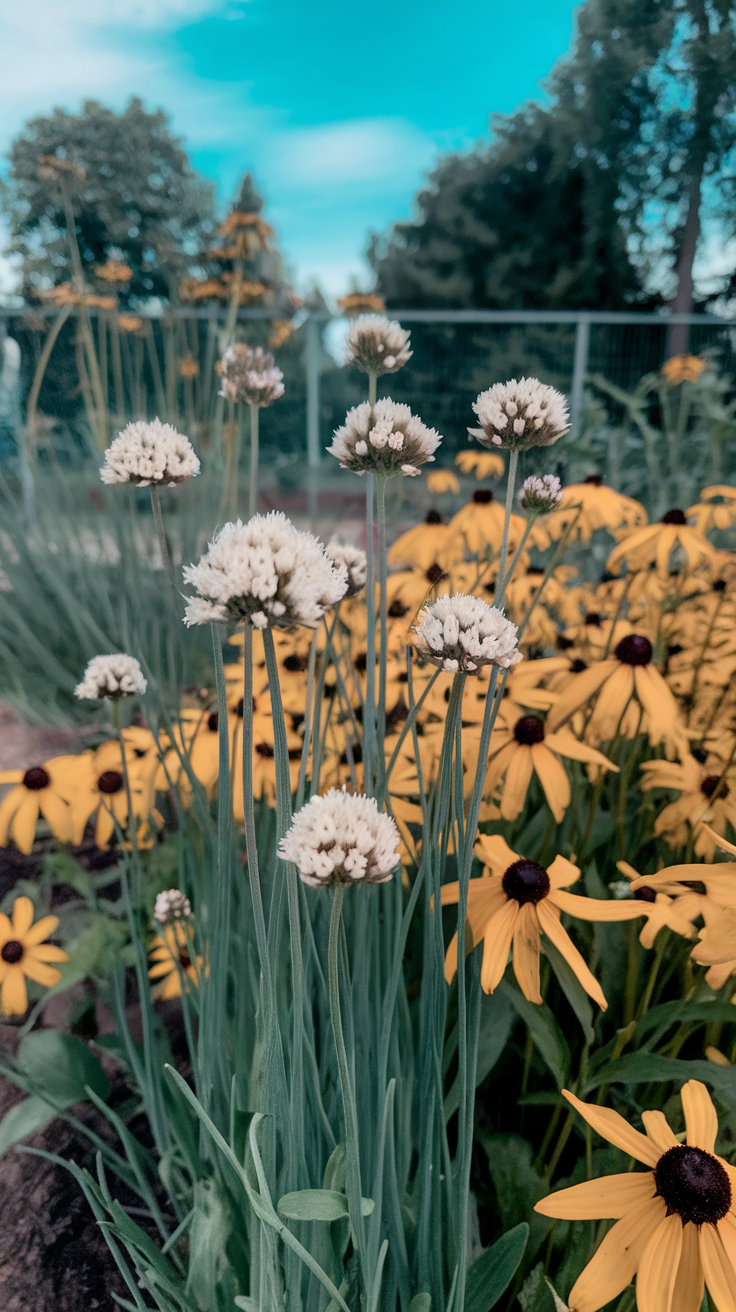
Chives add a lovely touch to any garden with their tall green stems and delicate white flowers. They contrast beautifully with the bright yellow petals of Black-Eyed Susans, creating a vibrant scene. Together, they bring color and life, making any outdoor space feel more inviting.
Why it works: Chives’ slim, green leaves and purple pom-pom flowers contrast beautifully with the bright yellow blooms of black-eyed Susans. Both attract pollinators and thrive in sunny conditions.
Placement: Use chives as a border plant with black-eyed Susans behind.
13. Beets and Snapdragons

Beets and snapdragons make a lovely pair in any garden. The vibrant colors of the flowers contrast beautifully with the rich, deep hues of the beets. Together, they create a cheerful and inviting atmosphere that’s hard to resist.
Why it works: Beets’ deep red foliage and roots pair beautifully with snapdragons’ colorful, spiky flowers. Both thrive in the cooler seasons.
Placement: Plant snapdragons in clusters with beets filling in the gaps.
14. Oregano and Roses

Oregano and roses create a lovely mix in any garden. The vibrant colors of the roses pop against the rich green leaves of the oregano. This combo not only looks great but also brings a delightful aroma to your outdoor space.
Why it works: Oregano is a low-maintenance ground cover with small flowers that complement roses without competing. Both thrive in sunny, well-drained beds.
Placement: Plant oregano around the base of rose bushes to suppress weeds and create a layered look.
15. Cucumbers and Sweet Alyssum

Cucumbers grow wonderfully alongside sweet alyssum. The vibrant flowers add a splash of color while attracting helpful pollinators. This combo not only looks great but also benefits your garden’s health.
Why it works: Cucumbers grow vertically, saving space, while sweet alyssum carpets the ground with its delicate, fragrant flowers. Alyssum attracts pollinators and suppresses weeds.
Placement: Use a trellis for cucumbers, with alyssum planted beneath.




